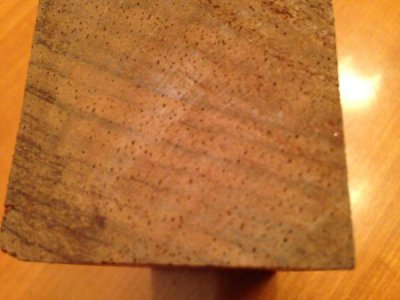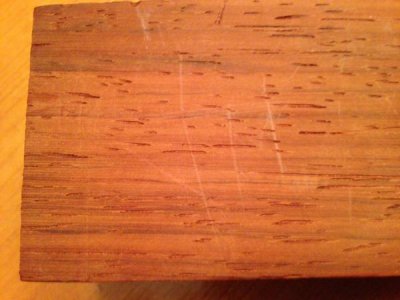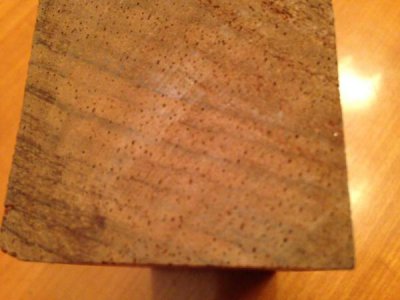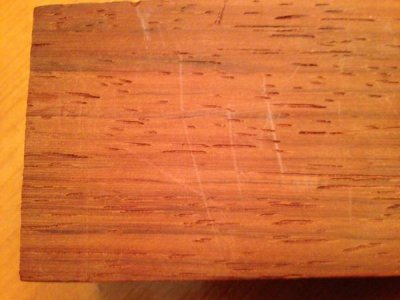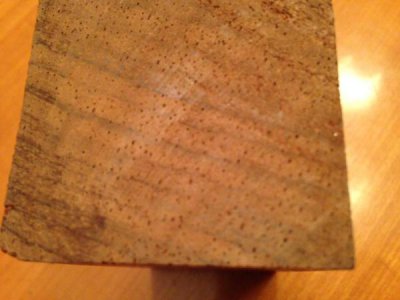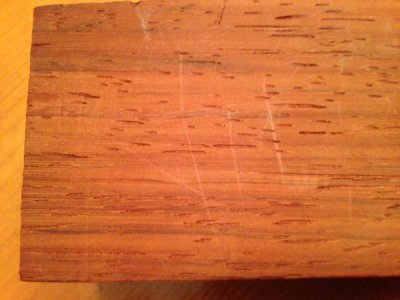I've been a woodworker for all my life both professional and semi-professional.
I'm going for Honduran Mahogany, or possibly farm grown Cuban Mahogany. Cuban Mahogany has a tighter and more dramatic grain, but it is commercially extinct. In fact the old growth timber is so valuable that folks actually takes mules miles into the jungle to poach trees (the tress are so huge they poke up out of the canopy). Honduran Mahogany has become quite expensive, and often what you buy now as "Mahogany" is from Africa and is not even the same family, vastly inferior and sucks to work with.
Your added description is the clincher. Honduran mahogany has a pleasant heft and solidity to it, but not exceptionally heavy like the jungle exotics. You can press a finger nail into it with medium to heavy pressure, it will dent with moderate force.
The most notable thing about it is that it is so pleasant to work with. There is probably no wood that machines better, and cuts better with hand tools. It is favored by pattern makers because it carves very easily, holds tight edges, and is dimensionally very stable.



